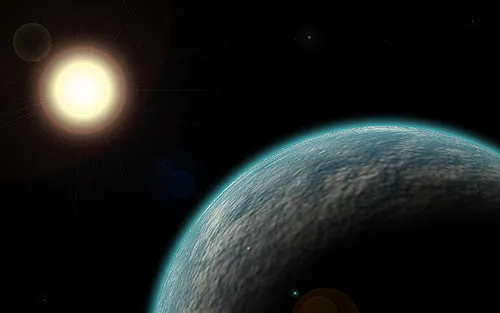We’ve done a lot of writing in the past about potentially “Earth-like” (generally meaning potentially rocky and habitable) planets outside of our own solar system, but this new one has a noteworthy distinction: It orbits a star in the Alpha Centauri system—the closest star system to Earth. That means there’s a potentially habitable world just around 4.25 lightyears away.
Not too long ago, even this planet—dubbed Proxima b after the star it orbits, Proxima Centauri—wouldn’t have been quite as exciting, because 4.25 lightyears, despite its relative proximity to Earth, is still impossibly, mind-bogglingly far away. (If you’d like to really get your sense of space distances grounded, head over to this fun kind-of-game that lets you scroll through the solar system to scale with the Moon the size of a single pixel. Things get pretty crazy after Mars.)
At that distance, it’s hard to know just how “Earth-like” the planet is, but based on its distance from Proxima Centauri and its size, the scientists who discovered it wrote in Nature that the data suggests it’s in its host star’s habitable zone—where its surface temperature could make it host to liquid water—and it’s probably a rocky world like Earth. However, as we’re quickly (or maybe too slowly) learning here on Earth, lots of factors affect how warm a planet is and whether or not it’s habitable, and Proxima b could very well be missing an atmosphere entirely due to X-Ray bursts from its own star. (Even Venus, which is positively Hellish today, could once have been habitable.)
But that’s where the really exciting part comes in: We may have a way to get up close and personal with Proxima b in the not-too-distant future. While sending humans that far out into space is a feat probably well beyond our lifetimes, sending tiny space probes out there could be a real possibility, and Stephen Hawking is already on board with a plan to send them to the Alpha Centauri system with Breakthrough Starshot. That means, unlike other exoplanets, we could actually find out firsthand what Proxima b is like and how well it matches up with scientists’ expectations—and, hey, if there is alien life there … bonus?
Even Starshot is still a few years and technological advancements away, but having a real exoplanet to study when we finally get there is a huge benefit that will surely be worked into those plans—and could boost the drive to make them happen. So let’s get out there and explore this potentially habitable planet! Judging by how things are going down here, we may need it one day.
(via Space.com, image via Matt Hendrick on Flickr)
Want more stories like this? Become a subscriber and support the site!
—The Mary Sue has a strict comment policy that forbids, but is not limited to, personal insults toward anyone, hate speech, and trolling.—
Follow The Mary Sue on Twitter, Facebook, Tumblr, Pinterest, & Google+.








